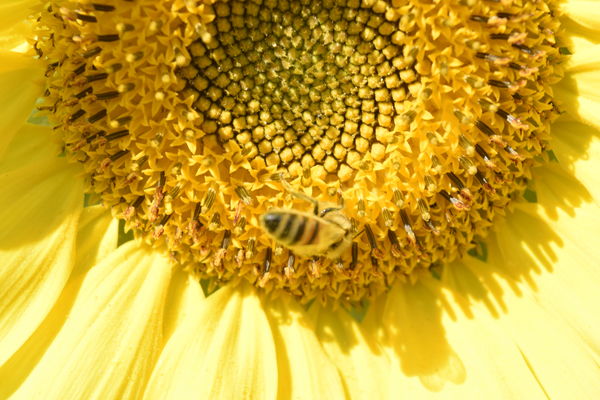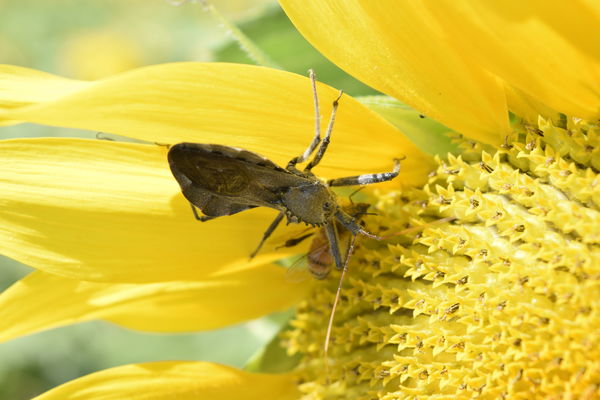Posts for: Roughdraft
Jun 1, 2019 15:47:19 #
My first impression was it would be of some benefit to the long exposure shooter. Flip up out of the way, compose the shot, flip a 10 stop filter in place and take the shot.
Dec 23, 2017 13:51:56 #
Nosaj wrote:
This aspect of street photography is rarely seen.
For some, they are too ugly or too uninteresting.
Here are a few of the uglier ones I've seen.
The third one includes a man pointing a camera down a side alley!
For some, they are too ugly or too uninteresting.
Here are a few of the uglier ones I've seen.
The third one includes a man pointing a camera down a side alley!
I like all three. The puzzling question in my mind is what do I find attractive about them. I think its the many colors that blend to make up the scene. The lighting and focus are sharp, at least to my eye. Nice job.
Mar 8, 2017 10:38:22 #
I like the B&W, it invokes a feeling of nostalgia, I can almost see Andy and Opie coming down the path with their cane poles. Thanks for posting.
Sep 7, 2016 16:33:01 #
Thanks everyone for taking the time to look. It is encouraging to know i'm on the right track.
Sep 5, 2016 19:07:16 #
Taken on my trip to the local sunflower field. Used a Nikon D3300, 18-55mm kit lens. These are from the jpg version. I shot in RAW, jpg fine so I can try my hand at PP.


May 29, 2016 12:18:59 #
jeep_daddy wrote:
This video will explain the benefits. http://www.slrlounge.com/workshop/dynamic-range-and-raw-vs-jpeg/
Thank you for the link, it was an extremely helpful explanation of the differences and benefits of both formats.
Time to go capture some light.
May 29, 2016 11:35:27 #
Gene51 wrote:
You will see that this topic will generate lots of... (show quote)
So it sounds like shooting in jpeg is equivalent to sending out a roll of film to be processed as opposed to developing the film yourself, where the processing center would use standard times and technique to develop the negatives. While shooting in RAW would equate to the photographer in the darkroom having greater control over the out come of the processed negative by increasing or decreasing process time.
I'm beginning to understand.
Thanks everyone for their contributions to the conversation.
May 28, 2016 13:16:18 #
rmalarz wrote:
Close, but not quite accurate. If you are shooting... (show quote)
Thank you for your input, the fog is beginning to lift.
May 28, 2016 13:13:39 #
Longshadow wrote:
Every manufacturer's RAW is different. Think of it... (show quote)
Thank you for your response that does shed some light on the subject, no pun intended.
May 28, 2016 11:03:14 #
From what I have read on the subject of RAW files my understanding is in RAW format the camera stores everything it "sees", while in jpeg the camera stores what it determines to be the best parts of the image and disregards the trash. Am I close on my understanding thus far?
This then leads to my base question, if RAW is the better format to shoot in why then is it necessary to convert images to jpeg for PP and not just shoot in jpeg and skip the conversion?
Enlightenment please
This then leads to my base question, if RAW is the better format to shoot in why then is it necessary to convert images to jpeg for PP and not just shoot in jpeg and skip the conversion?
Enlightenment please
Sep 15, 2015 17:29:26 #
littlebiddle wrote:
On the way back from the beach in Oregon we stayed near the waterfall in the Columbia Gorge on the Oregon side of the river. Made a couple of trips out to enjoy them.
Very nice, thanks for sharing.
Sep 13, 2015 11:21:55 #
St3v3M wrote:
Extreme Close Up of Everyday Things by Photographer Pyanek
http://viraltrends.org/2015/01/31/extreme-close-up-of-everyday-things-by-photographer-pyanek
http://viraltrends.org/2015/01/31/extreme-close-up-of-everyday-things-by-photographer-pyanek
Fascinating pics. They appear to be greater than 1:1. Impressive work thanks for sharing.
Jun 8, 2015 15:23:04 #
lamiaceae wrote:
Pretty much what nearly every one else said. There is a solution as you can see but what you tried will only work with a Nikon with a focus motor in the body. Meaning a higher up the line camera. A used D7000 or D7100, or new D7100 or D7200 would serve you well.
P.S. FX lenses work fine on DX cameras (for the most part), I'll leave the Nikon experts to give you further advise.
P.S. FX lenses work fine on DX cameras (for the most part), I'll leave the Nikon experts to give you further advise.
I was certain FX lenses would work as I have four thread mount lenses I use with an adapter left over from my old 35 mm film days. Only issue I have is no infinity focus, need to try a different adapter.
Jun 7, 2015 21:16:04 #
BebuLamar wrote:
I have a stupid question so forgive me. Do you use the focusing ring to focus? It's the tiny ring in front of the lens.
yes
Jun 7, 2015 19:53:32 #
chase4 wrote:
There is a recent Distortion Control Data firmware upgrade from Nikon that covers this lens and your D3300. Here's the link:
http://downloadcenter.nikonimglib.com/en/download/fw/140.html
I recommend that you install it, this upgrade may also cover other Nikon lenses that you may have.
chase
http://downloadcenter.nikonimglib.com/en/download/fw/140.html
I recommend that you install it, this upgrade may also cover other Nikon lenses that you may have.
chase
Thanks for the heads up I'll look into it.